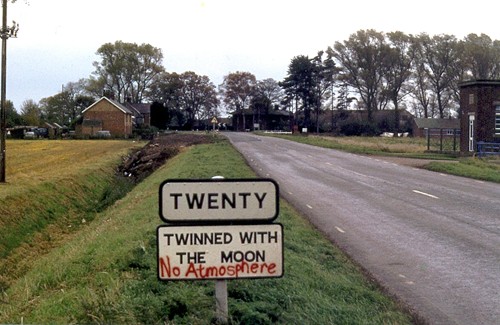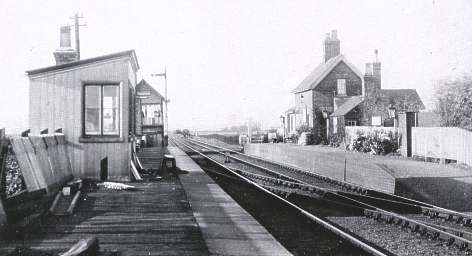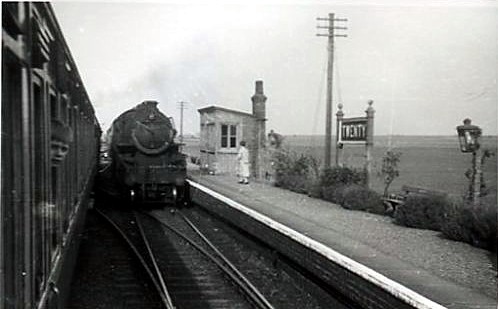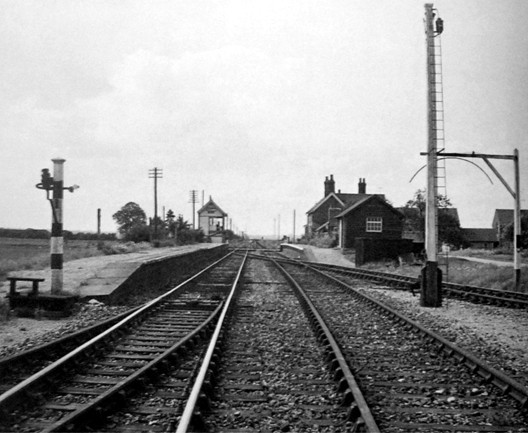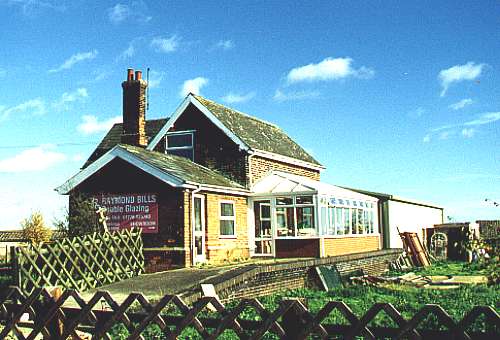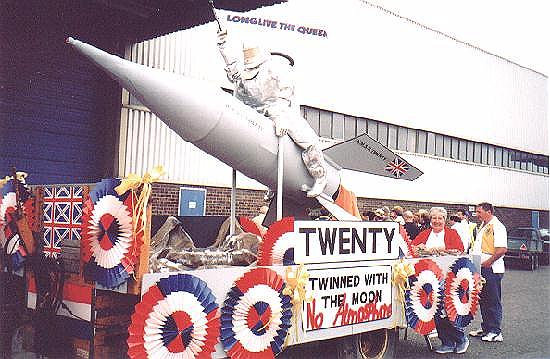|
Twenty
You must drive along a very dangerous stretch of road to reach the hamlet of Twenty, four miles east of Bourne, because the A151 into Spalding is narrow and undulating, badly maintained and with several severe bends, but what is more frightening is the deep drainage dyke forever on the offside and with each heavy lorry that thunders past defying the speed limit, you imagine yourself nose-diving to the bottom of it. Twenty is situated on one of the more notorious bends and appears at first sight to consist of little more than a bus stop, an electronically-controlled pumping station, the Black Sluice built in 1955, and a row of terraced council houses, but the heart of the village is to be found off the main road where there are many private homes and a busy community life. The hamlet achieved world fame in September 1982 when a local wag added two extra words to the twinning road sign in fluorescent paint and television pictures of the joke were beamed around the globe. In 1993, the village was again in the headlines when The Sun newspaper published a story linking Twenty with a cut in their cover price to 20p. This was once a busy village with its own railway station on the line between Bourne and Spalding but it closed to passengers in February 1959 and the 19th century station house is now a double glazing workshop although the platforms remain intact. The police house has also closed and has since been converted for residential use.
The Board School was built in the North Fen in 1876 on land owned by the Marquess of Exeter who was then Lord of the Manor, at a cost of £1,174, using the same architect and builder responsible for the Abbey Road Primary School in Bourne, and the yellow bricks and blue slates were brought in by freight train on the new railway line, opened only ten years earlier. The school was opened on 28th May 1877 with room for 60 children, although the average attendance was only 45 in 1885 when Mr Charles Leakey was the headmaster, rising to 54 when Mrs Louisa Beaver had taken over the headship by 1904 but by 1936, when Mrs Alice Thompson was headmistress, there were only 13 pupils on the roll. Other headmistresses were Mrs Edith Clarke (1936-37), Mrs G M Vacey (1937-38) and Miss D F Read (1938-58). The school was in use for a century until it was phased out by Kesteven County Council under their scheme to close all one-teacher establishments. The suggestion that the Twenty school should closed was made in February 1969. Attendance was then just 13 pupils aged between 4½ and 11 years old but difficulties of access had been identified because it was situated at the end of an unmade track and most of the pupils had to cross the main Spalding to Bourne road to reach it and this was considered to be an increasing danger. The actual building consisted of just one classroom, a cloakroom, canteen and outside toilets, while sports facilities were practically nil. Heat was provided by two old fashioned fuel stoves tended by the caretaker but only one was lit because of the tremendous heat generated when both were in use. The facilities were therefore considered to be inadequate to meet the changing legislation governing school premises. The school eventually closed in July 1975. Mrs Mary Hercock, who had been headmistress for eight years and had never had an assistant, decided that in view of the situation, there was no point in holding a protest meeting and the council should proceed with its plans to transfer the remaining pupils from the village to Bourne Primary School in Abbey Road. She said: "A petition will do little good because the most we can ever get is about 26 signatures. It was inevitable that the school would close one day and parents in the village have resigned themselves to this decision while their children will get much better facilities at the school in Bourne." There was great but tragic excitement here on 5th June 1951 when a plane crashed, killing its young pilot. The aircraft was a trainer from RAF Cottesmore, near Stamford, that spun to the ground in a field of wheat near the village, embedding the propeller and wheels so deeply in the ground that they could hardly be seen. The pilot, Cadet Officer James Renton, aged 24, sustained serious injuries and died later in hospital and an inquest subsequently recorded a verdict of accidental death.
There are many theories as to how Twenty became so named. Until 1977, it was suggested that drivers on the No 20 bus route serviced by the Lincolnshire Road Car Company were required to slow down to 20 m p h to negotiate the sharp corner on the road but that is a modern idea and we need to hark back to the 19th century for the real reason. In October 1853, local solicitor Francis Thomas Selby had proposed the formation of the grandiose sounding Spalding, Bourne and Stamford Railway and Waterworks Company. The tracks and a water pipe would run side by side through the fens between Spalding and Bourne and then the railway would continue across the Great Northern Railway's main line into Stamford. As it happened, this last section was completed by the GNR and opened in 1856 while the Bourne to Essendine portion was built by another group and opened in 1860. This left the 9½ mile section from Bourne to Spalding to be constructed by the Bourne-Spalding Railway Company and it opened for traffic on 1st August 1866 but was later absorbed into the Midland and Great Northern Joint Railway under their amalgamating act of 1893. During the construction work, it was decided to have three intermediate stations, mainly for the transit of farm produce. Since these would be well outside the village centres, names had to be invented for them and as the first station out of Bourne was sited near to a milestone on the main road, now the A151, announcing that it was 20 miles to Colsterworth, then the name of Twenty was adopted. Local historian Don Fisher gives a similar explanation in his brief history of Twenty, published in 2000 to mark the millennium, but suggests that when the building of the track reached the new North Fen station, the engineer in charge of the project said that a more specific name was needed and after asking how many sections had already been laid, he noticed that the station would be sited in a field in Section 20 of his Ordnance Survey map and the village was so named. Modern day Twenty has a vigorous community spirit and the village hall that was opened in July 1952 is the focal point for a variety of functions throughout the year. There is also a well-equipped playing field, leased from a local farmer for 25 years, with swings, climbing frame and a sandpit. Villagers are also anxious to see more newcomers moving in and the parish council is prepared to endorse most plans for new residential development.
See also The Great Flood of 1910 The Brackenbury boys
Go to: Main Index Villages Index |
